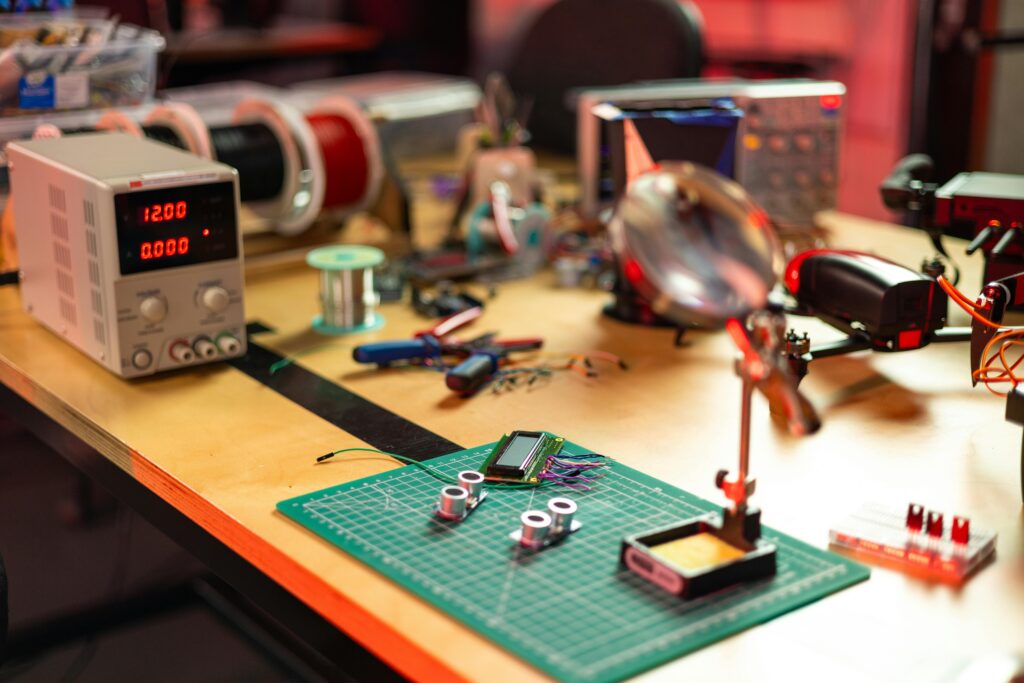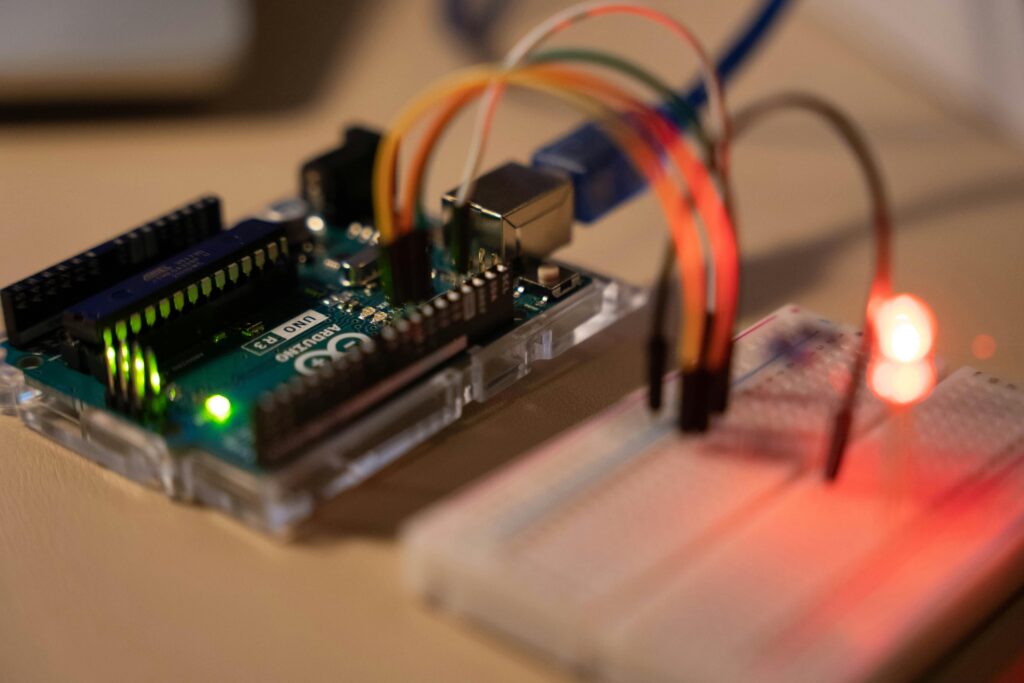
Photo by ThisIsEngineering
What Is DIY Electronics?
DIY Electronics (Do-It-Yourself Electronics) is all about designing and building your own electronic circuits, gadgets, or systems without depending on ready-made solutions. Whether it’s building a smart home system, a robot, or your own power bank, DIY electronics lets you turn ideas into working prototypes.
DIY projects often involve electronic components like sensors, microcontrollers (Arduino, ESP32), breadboards, soldering kits, and power management units. It’s a perfect mix of creativity, learning, and hands-on building.
Why DIY Electronics is Booming in the US
- STEM Education: Schools and colleges emphasize practical, hands-on skills.
- Affordable Kits: Cheap microcontrollers and modules from Amazon or AliExpress.
- Smart Home Integration: People love customizing their smart homes.
- Maker Movement: Growth in makerspaces, YouTube creators, and online tutorials.
- Side Hustle Potential: Many makers turn their skills into businesses via Etsy, Tindie, or affiliate blogs.
Tools You’ll Need for DIY Electronics
| Tool | Use |
|---|---|
| Breadboard | For building circuits without soldering |
| Arduino/ESP32 | Microcontrollers to control your project |
| Sensors | Detect temperature, motion, light, etc. |
| Jumper Wires | To connect components on breadboard |
| Soldering Iron | Permanent wiring for projects |
| Multimeter | To measure voltage, current, and resistance |
| Resistors/LEDs/Capacitors | Basic components for all circuits |
Want to get started with a smart home project? Check out the Amazon Smart Thermostat — an easy first step into smart DIY automation.
🔌 Popular DIY Project Categories

Photo by Chengxin Zhao
Start your hands-on journey by exploring focused DIY electronics areas. Whether you’re a beginner or want to level up, these categories will guide you through practical, buildable projects.
🔹 1. Sensor Projects
Learn how to work with motion, temperature, and light sensors using Arduino or ESP32. Ideal for home automation and smart alerts.
➡️ Coming soon: “Top 5 Sensor Projects for Beginners”
🔹 2. Microcontroller Projects
Build cool gadgets with Arduino Uno, Nano, or ESP32. From LED blinking to smart gadgets, this is the heart of DIY electronics.
➡️ Coming soon: “Beginner’s Guide to Arduino Microcontroller Projects”
🔹 3. Home Automation
Control lights, fans, and devices using remotes or your phone. Includes Amazon Smart Thermostat integration, Alexa support, and more.
➡️ Explore: Amazon Smart Thermostat Projects
🔹 4. Power & Batteries
Safely power your circuits using 18650 lithium-ion batteries, create your own battery packs, and learn protection circuit basics.
➡️ Coming soon: “DIY Lithium Battery Pack with BMS Guide”
🔹 5. Robotics & Motion
Create line-following robots, motorized cars, and more using basic components like DC motors, L298N drivers, and IR sensors.
➡️ Coming soon: “Build Your First Arduino Robot”
🔹 6. Wireless & IoT Projects
Make your projects wireless using Wi-Fi, Bluetooth, or RF. Send sensor data to your phone or control devices remotely.
➡️ Coming soon: “Beginner’s IoT Project with ESP32 and Wi-Fi Control”
🔀 New posts will be added in each category — bookmark this guide and check back often! you can visit Upcoming DIY Projects to explore more.
Beginner Project Ideas to Try First
- LED Blinker with Arduino
- Understand digital output, breadboard wiring, and code uploading.
- Motion Sensor Light
- Use a PIR sensor to turn on an LED/light when someone enters a room.
- Temperature Logger
- Read temperature with a DHT11 sensor and display it on an OLED screen.
- Wi-Fi Controlled Relay
- Use ESP32 to switch devices on/off via phone.
- Line Following Robot
- Two IR sensors + Arduino + motor driver = a simple bot that follows a black line.
Check out more exciting projects ahead
How to Earn from DIY Electronics
- Amazon Affiliate Links: Recommend parts/tools and earn when someone buys.
- YouTube Channel: Show your builds and monetize.
- Blog or Website: Like ToolopediaX.com, create guides and monetize with display ads and affiliate links.
- Sell Projects or Kits: Use Etsy or Tindie to sell assembled gadgets or kits.
FAQs
Q. Do I need to be an engineer to start with DIY electronics?
No, even school students can start with basic kits and tutorials.
Q. What’s cheaper — buying gadgets or building DIY?
DIY is cheaper for small tools/gadgets and helps you customize things.
Q. Is Arduino better or ESP32?
Arduino is beginner-friendly. ESP32 has more power and Wi-Fi/Bluetooth support.
Q. Can I automate my home with DIY projects?
Yes! Start with relays, smart plugs, and thermostats like the Amazon Smart Thermostat.
Q. How much does it cost to begin?
Basic kits start under $30. Add-ons depend on the project.
Final Thoughts
DIY electronics is one of the most satisfying hobbies and side-hustles out there. You not only learn valuable tech skills but also create real, working devices. So whether you want to automate your home or build the next cool gadget — this is where you start.
📍 Bookmark this page. Follow each project category. And keep building!
Explore More: